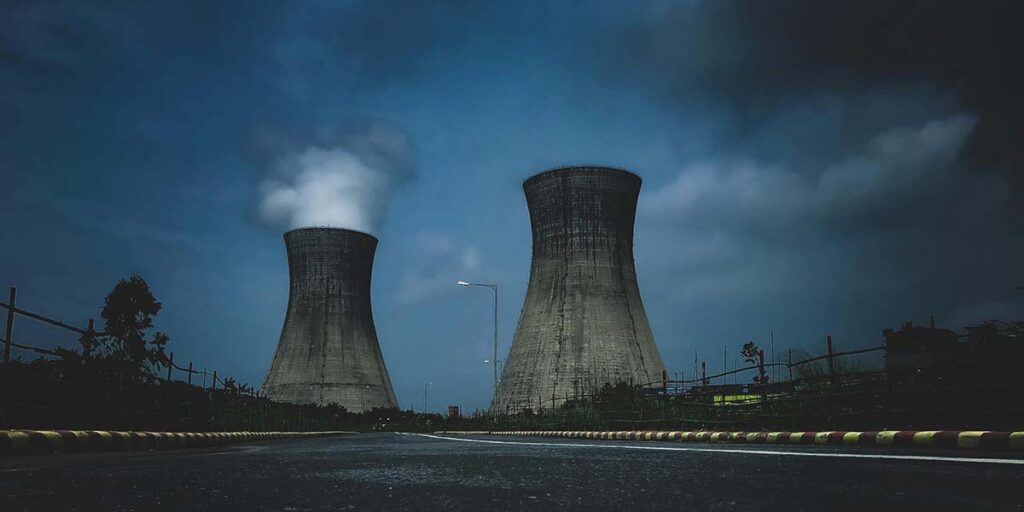In the late 1970s, the Three Mile Island nuclear plant in Pennsylvania became synonymous with nuclear mishap. On March 28, 1979, a partial meltdown at the Unit 2 reactor led to the release of radioactive gases, marking the most serious accident in U.S. commercial nuclear power history.
Fast forward to today, and the narrative is shifting. Microsoft has entered a long-term power purchase agreement with Constellation Energy to breathe new life into a dormant unit at Three Mile Island. This move aims to provide stable, carbon-free power for its expansive data centers and AI operations.
Technology is hungry. Not in the figurative sense, but in the raw, measurable form of megawatts, gigawatts, and soon, terawatts. The world’s power demand isn’t just increasing – it’s shifting.
Once, economic growth dictated energy use. Industrial expansion meant more factories, more homes, more cities consuming electricity. But that model changed. By the mid-2000s, in the U.S. and other advanced economies, electricity demand flattened out, thanks to more efficient appliances, lighting, and industrial processes.
That was before AI, before cloud computing, before hyperscale data centers operating 24/7, crunching numbers on an unprecedented scale. Now, with companies like Microsoft predicting their own energy consumption to grow by 500-600% over the next few decades, the question isn’t whether power demand will rise – it’s how we’ll supply it.
Why Nuclear?
The tech industry has spent the past two decades doubling down on renewables, like wind farms, solar arrays, or battery storage. But intermittent power sources have limits. The sun doesn’t always shine. The wind doesn’t always blow. Data centers don’t turn off.
For tech companies, nuclear solves the intermittency problem while still ticking the carbon-neutral box. It’s not a replacement for renewables, but it is a baseload supplement-power that’s steady, predictable, and scalable. And with new Small Modular Reactors (SMRs) on the horizon, nuclear isn’t the behemoth industry of the past. It’s becoming smaller, faster, and more adaptable.
The Tech Giants Betting on Nuclear
Microsoft: Reviving Three Mile Island
Microsoft isn’t building a nuclear plant from scratch. Instead, the company signed a 20-year power purchase agreement with Constellation Energy to revive Unit 1 at the Three Mile Island nuclear site in Pennsylvania.
This is the same Three Mile Island that suffered the worst nuclear accident in U.S. history in 1979. The partial meltdown of Unit 2 led to 140,000 people evacuating the area amid fears of radiation exposure. Studies later found no long-term health impacts, but the event marked a turning point in nuclear policy, causing dozens of planned reactors to be canceled.
Microsoft’s deal will bring 800 megawatts of carbon-free power online by 2028, keeping its data centers running without reliance on fossil fuels.
Amazon (AWS): Investing in Small Modular Reactors
Amazon Web Services (AWS) is pouring $500 million into nuclear projects across Washington, Virginia, and Pennsylvania.
The company isn’t just buying power, it’s backing feasibility studies for new reactors, ensuring long-term energy stability for its AI and cloud operations.
Amazon has taken a stake in X-energy, an SMR developer, as part of its nuclear push.
Google (Alphabet): Partnering with Kairos Power
Google signed a landmark agreement with nuclear startup Kairos Power, securing up to 500 megawatts from SMRs.
The first reactor is expected to go online by 2030, with additional units rolling out through 2035.
Google has long pledged to power its data centers with carbon-free energy, and this move cements nuclear as a key part of that strategy.
Meta: A Nuclear Plan Stalled by a Bee
Meta was looking for a nuclear-powered AI data center, but hit a roadblock – not a bureaucratic one, but an environmental one.
The proposed site housed a rare bee species, triggering regulatory challenges that shelved the project.
While the setback delayed Meta’s plans, the company continues considering nuclear energy as part of its long-term sustainability strategy.
Oracle: Aiming for Gigawatt-Scale Nuclear Power
Oracle is reportedly planning a nuclear-powered data center.
The company aims to source power from multiple SMRs, achieving a gigawatt-scale supply – more than some small nations consume.
The Promise and Challenge of Small Modular Reactors (SMRs)
What are SMRs?
Unlike traditional reactors, which can generate 1,000+ megawatts, SMRs cap out at around 300 megawatts per unit.
They are factory-built, field-assembled, and scalable. This means power plants can start small and expand as needed.
Rolls-Royce, GE Vernova, and Westinghouse all have SMR designs in development, with Bill Gates’ TerraPower and Amazon-backed X-energy leading the startup push.
Challenges of SMRs
There are currently only three operational SMRs in the world (one in China, one in Russia, one in India).
Three more are under construction, but 65 are still in the design phase, meaning large-scale deployment is still years – possibly decades – away.
Cost remains an issue. Early SMR projects are expensive, and without economies of scale, each unit remains costlier per megawatt than conventional nuclear.
The Bigger Picture: The U.S. and Global Nuclear Landscape
The U.S. generates the most nuclear power in the world, but its fleet is aging. Most reactors were built in the 1960s and 70s.
France relies on nuclear for ~70% of its electricity, while Germany has phased it out completely.
Fusion, the long-promised “clean nuclear” alternative, remains theoretical. Microsoft signed a deal with Sam Altman’s Helion Energy, but experts widely agree fusion is still decades away.
Conclusion: Tech’s Nuclear Gamble
Tech companies are moving into nuclear – not as builders, but as buyers. Their energy needs are outpacing what traditional grids can provide, and while renewables have expanded, they don’t offer the kind of continuous power supply that massive data centers require. Nuclear, particularly Small Modular Reactors (SMRs), is emerging as a solution, but the technology is still in early stages.
The investments being made today, whether through power purchase agreements, feasibility studies, or direct financing of nuclear power plant start-ups, reflect a shift in strategy. These companies aren’t waiting for the government or utilities companies to catch up. They are moving toward their own energy sources to keep their systems running and growing.
What’s clear is that the demand for stable, low-carbon power is only growing. Whether nuclear, and specifically SMRs, can scale quickly enough to meet that demand remains uncertain. For now, the tech industry is hedging its bets – not just on AI, but on how to keep the servers running when the lights start flickering.
Sources:
- Reuters – Microsoft deal propels Three Mile Island restart, with key permits still needed
- Reuters – Microsoft may pay Constellation premium in Three Mile Island power agreement, Jefferies says
- Reuters – US nuclear regulator kicks off review on Three Mile Island restart
- Bloomberg – Three Mile Island Nuclear Plant Will Restart to Power Microsoft AI
- The Wall Street Journal – Inside the Audacious Plan to Reopen Three Mile Island’s Nuclear Plant
- The Wall Street Journal Podcast – Why Microsoft Wants Three Mile Island’s Nuclear Power
- Reuters – US nuclear plants won’t power up Big Tech’s AI ambitions right away
- The Wall Street Journal – Nuclear-Powered AI: Big Tech’s Bold Solution or a Pipedream?
- Reuters Breakingviews – AI sparks only dim odds of nuclear chain reaction

